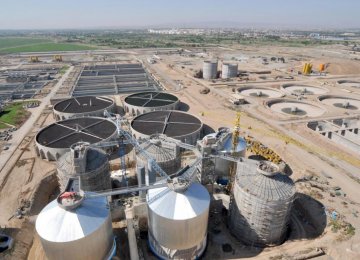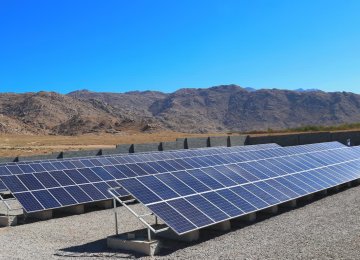Electricity generation from wastewater has commenced in several refineries and will be expanded in the near future, director of biomass department at the Renewable Energy Organization of Iran (SUNA) said, IRNA reported.
Javad Nasiri said, "A five megawatt (MW) power plant has been established in Tehran's main refinery in the south and another 2 MW plant is under construction."
Generating electricity from wastewater is underway in Isfahan Province and will soon be carried out in Shiraz and Tabriz.
SUNA has also plans to generate energy from biomass.
"Biomass in not only a source of energy, but more importantly, an effective means of reducing contaminants and greenhouse gases," he said, warning against the detriments of waste material.
Biomass is a biological material derived from living, or recently living organisms. It most often refers to plants, plant-based material or animal waste and is used to create electricity or other forms of power.
In biomass power plants, waste is burned to produce steam that runs a turbine to make electricity, or that provides heat to industries and homes.
According to Nasiri, an incineration plant with one MW capacity can reduce carbon dioxide emission by 50,000 tons per year, whereas a wind plant with the same capacity is capable to reduce CO2 emission by 5,000 tons at the most.
Incineration plants, also known as waste-to-energy (WTE) plants, are dedicated to the thermal treatment of wastes with or without recovery of the combustion heat generated.
Close to 20 million tons of waste are produced every year in Iran on average, and 100 tons of waste is enough to run a two MW power plant every day.
Iran has the capacity to generate more than 10,000 MW of electricity via biomass, with 25 cities in the country capable to generate at least 400 MW of electricity from waste material, according to Nasiri.
Biomass is the largest global source of renewable energy, and contributes an estimated 10 percent of global energy production, in particular as a direct source of industrial and domestic heat.
It offers environmental and consumer benefits, including improving forest health, protecting air quality, and offering a dependable renewable energy source.










